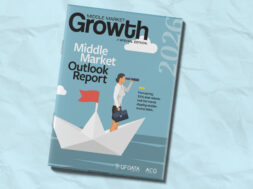Dealmaker Q&A: Ara Partners on USD Clean Fuels Acquisition
George Yong shares why the infrastructure and industrials space is positioned to change and how that’s creating investment opportunities

Ara Partners, a PE firm focused on the industrial decarbonization sector, acquired USD Clean Fuels, a logistics infrastructure developer, earlier this year as a continuation of their commitment to a “green molecules economy.” George Yong, partner and co-head of infrastructure at Ara, told Middle Market Growth that the industrials and infrastructure space has a long way to go to decarbonization—but that challenge creates an opportunity for outsized returns.
Middle Market Growth: When sourcing the deal, what were you looking for in an investment and how did USD Clean Fuels fill those requirements?
George Yong: We look for businesses with classic infrastructure characteristics that are undergoing significant growth from the structural tailwinds of the decarbonization of industry. These characteristics include cash flow generating assets, businesses underpinned by contracted revenues, minimal tech or commodity risk and proven management teams. Ara finds that that 90% of all climate change-focused capital to date goes to the renewable energy ecosystem, while only 10% of capital investment goes to decarbonizing the industrial market, which is where USD Clean Fuels fits in. By investing in USD Clean Fuels, we are bringing a very infrastructure-friendly midstream business model into the biofuels space, which is expected to more than triple by the end of this decade.
By investing in USD Clean Fuels, we are bringing a very infrastructure-friendly midstream business model into the biofuels space, which is expected to more than triple by the end of this decade.
George Yong
Ara Partners
MMG: What attracted Ara to the infrastructure sector initially, and how does this deal fit into your broader investment strategy?
GY: As one of the first movers in industrial decarbonization investing, Ara has had a front row seat in the evolution of the low-carbon revolution through its portfolio companies and industrial network. It’s clear that much of this transition will be powered by infrastructure capital. Our infrastructure strategy is a natural extension of the firm that relies on our key competencies, including our “builder skillset.” We have established in-house operational, technical and project management capabilities that position us as a very strong partner to companies and management teams that are looking to build, scale and enhance low-carbon infrastructure projects and facilities.
MMG: What are some industry headwinds you’re watching, and how do you plan to drive growth despite those?
GY: Like most asset classes, infrastructure has not been immune to rising interest rates. In this environment, it’s important to look at growth-oriented opportunities to drive return. Now that over 70 countries and thousands of companies have made net zero commitments, governments and companies are driving real structural shifts that are creating an ecosystem rich in growth-oriented opportunities with true infrastructure characteristics.
MMG: On that note, how has 2021’s Infrastructure Investment and Jobs Act impacted the space in the past couple years and how do you see it doing so going forward?
GY: As noted, government support is driving a major component of this structural shift and regulations such as the Inflation Reduction Act have significantly accelerated private sector adoption of strategies to decarbonize segments such as hydrogen and renewable fuels. This wider adoption by large companies is creating opportunity for infrastructure investors like Ara to structure and invest in project finance-style transactions that are backed by creditworthy counterparties.
MMG: What do you think are the next big steps/targets in decarbonizing the infrastructure space?
GY: At Ara we believe that the industrial segment of the economy needs to be decarbonized. I mentioned that the vast majority of climate-focused capital raised to date has been directed toward the “greening of the electron”—renewable power, EVs, etc. The industrial economy, however, has only received 10% despite being the largest contributor of carbon emissions globally. This imbalance creates a generational opportunity to deliver outsized returns while addressing carbon reduction globally in a more impactful way.
This interview has been edited and condensed for clarity.
Hilary Collins is ACG’s Associate Editor.
Middle Market Growth is produced by the Association for Corporate Growth. To learn more about the organization and how to become a member, visit www.acg.org.


